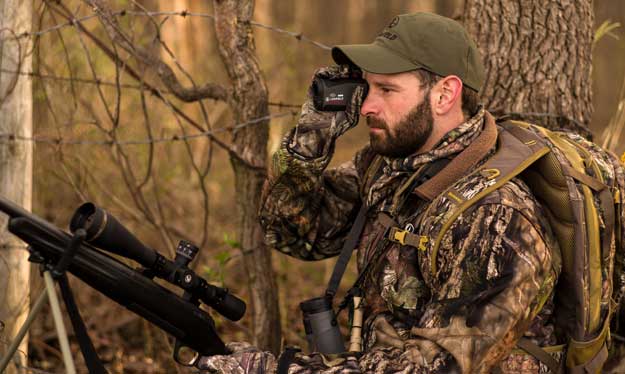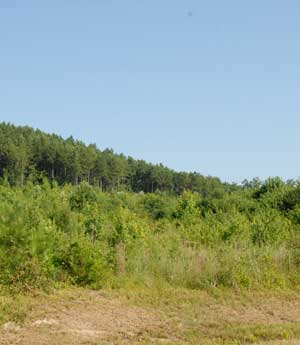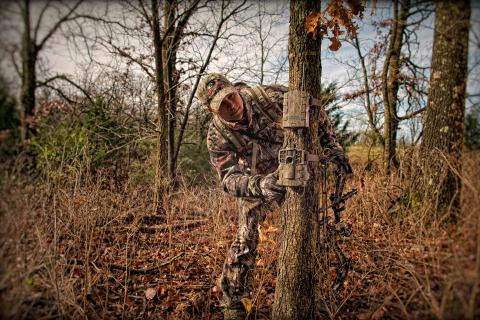Ken Reeves | Mossy Oak ProStaff

In many areas of the country, the federal government has required the strip mining companies to reclaim strip mined land with grasses and pine trees. Most of us think of a strip mine as being nothing but dirt and rocks. But if these strip mines are reclaimed and planted with grasses and pine trees, they often make ideal habitat for whitetails.
I have a friend in Walker County Alabama, who has about 2,000 acres leased on some of this strip mined property. At one time, all the property was strip mined for coal. Today, that old mining property has grown up in pine trees, planted grass and an abundance of native grasses and bushes. The reclamation of this old strip mine was done in blocks. In many places, it looks like the terrain of the West with wide open places, because you can see for so far. It has a lot of grass and other vegetation where the deer can hide. The only way I've learned to see those deer in those thick cover places and open terrain is to use a spotting scope like western hunters do.
My friend who leases this property also has planted food plots on much of the strip mined property to increase the availability of food for the deer. I can see deer crossing from one block of reclaimed land into another block of reclaimed land from 200 to 400 yards away, especially with my spotting scope.
 A few years ago I took a really nice 10-point on this strip mined property at 250 yards. I actually thought I had missed the buck, because he vanished after the shot. This hunt was during the rut, and this buck was chasing a doe. I had to make the shot uphill from where I was sitting. When I spotted this buck, I was sitting in a small game chair on the ground, looking up the hill. Once I saw the buck, I turned the game chair around and got on one knee to make the shot. As soon as I shot, I called my buddy and told him where my stand was, where the deer had been standing before the shot, and that the buck had vanished.
A few years ago I took a really nice 10-point on this strip mined property at 250 yards. I actually thought I had missed the buck, because he vanished after the shot. This hunt was during the rut, and this buck was chasing a doe. I had to make the shot uphill from where I was sitting. When I spotted this buck, I was sitting in a small game chair on the ground, looking up the hill. Once I saw the buck, I turned the game chair around and got on one knee to make the shot. As soon as I shot, I called my buddy and told him where my stand was, where the deer had been standing before the shot, and that the buck had vanished.
My friend said, “I can’t believe you took a shot that far. That buck had to be over 440 yards away from you.”
My friend had never ranged the distance from where my stand was to the other side of the hill. To be honest, I really thought the shot was more than 400 yards. But when I ranged it, the range finder reported 250 yards. I had a hard time believing the range finder, because I would have sworn that the buck was more than 400 yards from me. For an instant, I was really questioning my range finder. But over the years, I've learned that the range finder is right more times than I'm right when it comes to judging distance. So, I shot that buck at 250 yards.
The next day, after I had harvested my buck, we came back with two different range finders and both of them reported that the distance from my stand to where the buck had been standing when I shot was 250 yards. At the time, I was using a Leupold range finder. Today, I use the Bushnell range finder.
When I climbed up the hill to where I had shot the buck, I found a blood trail. The deer hadn’t gone very far at all. When I got to him, he was stone cold dead and would have scored between 140-145 on Boone & Crockett. He weighed between 180 and 190 pounds, which is a really big deer for the State of Alabama.
After making that shot with my single-shot Encore 7mm, I built more confidence and faith in that rifle and that caliber. I bought the Thompson/Center Encore 7mm, because it was inexpensive when I first decided to buy one. Even today, they're not as expensive as many rifles. I believe in their accuracy, and their ability to shoot flat over long distances, as well as in tight quarters. The 7mm Mag is my favorite rifle for hunting deer.



























